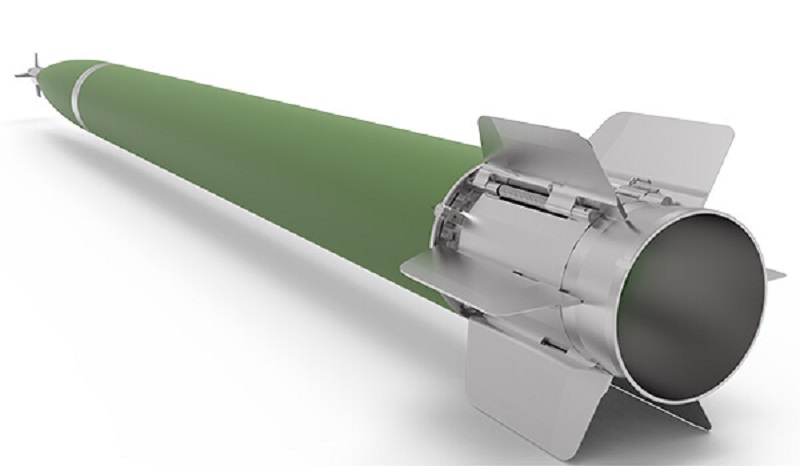Serbian defense company Engine Development & Production (EDePro) displayed its new Hurricane 262 mm unguided surface-to-surface rocket at the 16th International Defence Industry Fair (IDEF) held from 25 to 28 July in Istanbul.The HURRICANE 262mm is guided surface-to-surface missile intended for strong general fire support and action on tactical depth of the enemy. The high accuracy (C.E.P. less than 0.3 % at maximal range) is achieved by clever design and strict quality control. It is used to defeat enemy motor-rifle and infantry units in concentration areas, on the march and in battle formations, artillery and mortar batteries, air defense units, and logistics facilities.

The rocket motor is completely new modern design with single propellant grain, which is inhibited along the outer surface and front end. It contains two types of propellant, which differ in burning rate. The propellant used for grain production is modern thermoplastic composite propellant with excellent energetic, mechanical and aging characteristics. Navigation and calculation of flight commands is carried out using aided INS (AINS) navigation based on INS or GPS. To enable the prediction accuracy, the guidance is based on preset trajectory points from the GCS, flight path steering (FPS) and impact point prediction (IPP).

A missile launches from multi-barrel container-type launching rocket system. The vehicle can carry 2 launching modules each contains 6 tubes, total 12. The launch modules are designed for giving direction when launching, locking the rocket when traveling, electrical ignition of the rocket motor and stowage and storage. The elevation and traverse can be automatic, semi-automatic and manual. The impact fuse, that is positioned at the front, ignites the blast fragmentation warhead. It is composed of an explosive charge, pre-fragmented components, and a shell. Pre-fragmentation is carried out in such a way as to have various masses of fragments to meet various purposes (from armed forces to light armored targets).
FEATURES
Maximum effective range: 70.7 km
Launch vehicle capable of carrying 12 projectiles
Fast preparation for launching and simple use
Rocket motor with modern thermoplastic composite propellant
Guidance system based on flight path steering (FPS), impact point prediction (IPP) and GCS preset trajectory points (GMLRS version)
Enabled communication with the GCS during mission setup (GMLRS version)
Aided INS (AINS) based on INS or GPS depending on availability (GMLRS version)
6 folded fins securing stability (MLRS version); spinning tail fins (GMLRS version)
Breaking ring for shorter range, firing over obstacles and landing with high impact angle (MLRS version)












